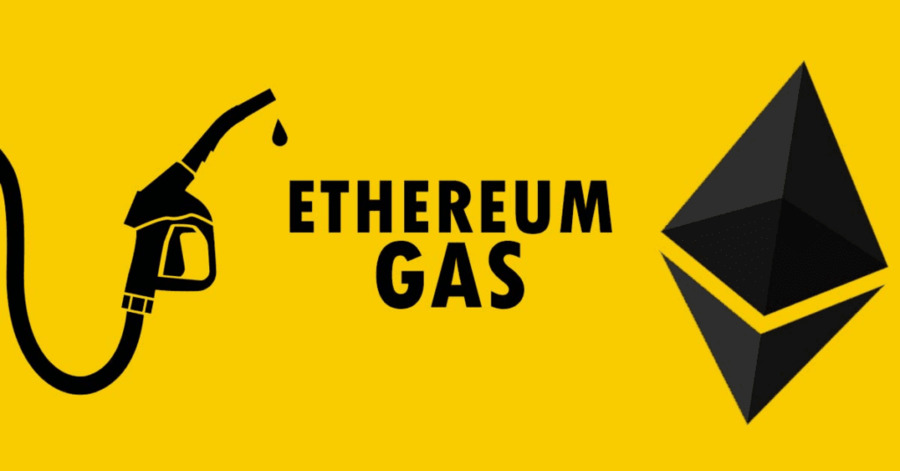
Ethereum: Unlocking the Potential of Smart Contracts
In the rapidly evolving world of blockchain technology, Ethereum has emerged as a groundbreaking platform that is revolutionizing the way we think about smart contracts. With its decentralized nature and robust capabilities, Ethereum offers a myriad of possibilities for developers, businesses, and individuals alike. In this article, we will delve into the world of Ethereum and explore how it unlocks the potential of smart contracts.
What is Ethereum?
Ethereum is an open-source blockchain platform that enables the creation and execution of smart contracts. It was proposed by Vitalik Buterin in 2013 and launched in 2015. While Bitcoin primarily focuses on peer-to-peer transactions, ETH goes beyond simple digital currency and introduces the concept of smart contracts.
Understanding Smart Contracts
Definition and Purpose
Smart contracts are self-executing contracts with the terms of the agreement directly written into code. They automatically execute transactions and enforce the agreed-upon rules without the need for intermediaries. Smart contracts aim to eliminate the need for trust in traditional contract enforcement by leveraging the transparency, security, and immutability of blockchain technology.
How Smart Contracts Work
Smart contracts are written in programming languages specifically designed for Ethereum, such as Solidity. Once deployed on the ETH blockchain, these contracts can be interacted with by sending transactions to their addresses. The decentralized nature of Ethereum ensures that the execution of smart contracts is distributed across a network of computers, providing security and reliability.
Ethereum and Smart Contracts
Ethereum’s Role in Smart Contracts
ETH serves as the underlying infrastructure for executing smart contracts. It provides a decentralized virtual machine called the Ethereum Virtual Machine (EVM), which runs the code of smart contracts. This allows developers to create a wide range of decentralized applications (dApps) that leverage the power of smart contracts.
Benefits of Using Ethereum for Smart Contracts
- Transparency: Ethereum’s blockchain is public, immutable, and transparent, providing visibility into the execution of smart contracts.
- Decentralization: Smart contracts on ETH are executed by a network of nodes, ensuring the absence of a single point of failure.
- Security: The cryptographic nature of Ethereum ensures that smart contracts are secure against tampering and fraud.
- Interoperability: Ethereum’s open standard allows different smart contracts and dApps to interact and integrate seamlessly.
- Flexibility: Ethereum’s programmable nature enables the creation of complex smart contracts with various functionalities.
Real-World Applications of Ethereum Smart Contracts
- Decentralized Finance (DeFi): Decentralized Finance, or DeFi, has emerged as one of the most prominent use cases for ETH smart contracts. DeFi platforms enable individuals to access financial services without intermediaries, such as lending, borrowing, and decentralized exchanges. These applications provide greater financial inclusivity, transparency, and composability.
- Supply Chain Management: Smart contracts on Ethereum can enhance supply chain management by providing transparent and immutable records of goods and transactions. With the ability to track and verify the movement of products, supply chain participants can ensure authenticity, reduce fraud, and streamline processes.
- Voting and Governance: By leveraging ETH smart contracts, voting and governance processes can become more secure, transparent, and efficient. Smart contracts enable the automation of voting procedures, ensuring the accuracy of results and minimizing the potential for manipulation.
- Intellectual Property Rights: Smart contracts on Ethereum can revolutionize the management and protection of intellectual property rights. Artists, musicians, and content creators can utilize smart contracts to automate royalty payments, establish ownership rights, and enforce copyright protection.
Challenges and Limitations
- Scalability Issues: As Ethereum gains popularity, scalability has become a significant concern. The current design of ETH faces limitations in terms of transaction throughput and network congestion. However, solutions such as Ethereum 2.0 and layer-two scaling solutions are being developed to address these scalability challenges.
- Security Concerns: While ETH is known for its security, smart contracts are not immune to vulnerabilities. Coding errors or design flaws in smart contracts can lead to exploits or hacks. Therefore, thorough code audits and best practices are essential to mitigate security risks.
- Regulatory and Legal Considerations: The rise of Ethereum and smart contracts has raised regulatory and legal questions. The legal status of smart contracts, jurisdictional challenges, and compliance with existing laws and regulations are important aspects that need to be addressed for widespread adoption.
Ethereum Development Tools and Frameworks
Developers working with ETH have a wide range of tools and frameworks at their disposal to simplify the development process. These tools provide a higher level of abstraction and enable developers to focus on building the logic of their smart contracts rather than dealing with the intricacies of the underlying blockchain technology. Some popular Ethereum development tools and frameworks include:
- Truffle: Truffle is a development framework that provides a suite of tools for smart contract development, testing, and deployment. It offers a development environment, a testing framework, and a build pipeline for efficiently managing and deploying smart contracts.
- Remix: Remix is a web-based integrated development environment (IDE) for Ethereum smart contract development. It provides a user-friendly interface for writing, testing, and deploying smart contracts directly in the browser. Remix also offers debugging and code analysis features.
- Ganache: Ganache is a personal ETH blockchain for development and testing purposes. It allows developers to create local Ethereum networks with pre-configured accounts and test their smart contracts in a simulated environment. Ganache provides a user-friendly interface and supports advanced features like transaction visualization and contract debugging.
- Web3.js: Web3.js is a JavaScript library that provides an interface for interacting with the Ethereum blockchain. It allows developers to write client-side applications that can communicate with smart contracts deployed on the ETH network. Web3.js simplifies tasks such as sending transactions, querying contract data, and listening for events.
- Hardhat: Hardhat is a development environment and task runner for Ethereum smart contracts. It offers a comprehensive toolkit for compiling, testing, and deploying contracts, as well as scriptable deployment and advanced debugging capabilities. Hardhat also supports plugins, allowing developers to extend its functionality.
These development tools and frameworks greatly enhance the efficiency and productivity of ETH developers, enabling them to build robust and reliable smart contracts with ease.
The Role of Ethereum Gas

Gas is an integral concept in the Ethereum ecosystem that determines the cost and priority of executing transactions and smart contracts. Gas represents the computational effort required to perform a specific operation on the ETH network. Each operation in a smart contract, such as reading or writing data, consumes a certain amount of gas.
The gas cost for a transaction is calculated based on the complexity and computational resources required to execute the transaction. Gas costs are denoted in “Gwei,” which is a fraction of the cryptocurrency Ether (ETH). The price of gas can fluctuate depending on network congestion and market demand.
Gas limits and gas prices are set by users when they submit transactions to the ETH network. Gas limits define the maximum amount of gas a user is willing to spend for a transaction, while gas prices determine the price per unit of gas. Miners prioritize transactions with higher gas prices, as they incentivize miners to include those transactions in the next block.
It’s essential for developers and users to optimize gas usage to minimize transaction costs and avoid out-of-gas errors. This can be achieved through efficient coding practices, such as reducing unnecessary computations, using storage and memory efficiently, and optimizing data structures.
Understanding the role of gas and optimizing gas usage is crucial for ensuring cost-effective and efficient smart contract execution on the Ethereum network.
Ethereum Improvement Proposals (EIPs)
Ethereum Improvement Proposals (EIPs) are proposals for changes or enhancements to the Ethereum protocol. EIPs allow developers and community members to propose improvements, standards, or new features for consideration by the Ethereum community.
EIPs cover a wide range of topics, including technical specifications, protocol upgrades, standardization of interfaces, and new Ethereum Improvement Proposal standards. They are discussed, reviewed, and accepted through a transparent and community-driven process.
Some notable EIPs that have had a significant impact on the Ethereum ecosystem include:
- EIP-20: Also known as the ERC-20 standard, this EIP introduced a token standard for fungible tokens on the Ethereum blockchain. The ERC-20 standard enabled the widespread creation and interoperability of tokens, leading to the emergence of Initial Coin Offerings (ICOs) and the growth of the decentralized token economy.
- EIP-721: The EIP-721 standard introduced non-fungible tokens (NFTs) on the Ethereum blockchain. NFTs are unique digital assets that represent ownership or proof of authenticity for digital or physical items. This standard revolutionized digital art, collectibles, and gaming, allowing for the tokenization and ownership of unique assets.
- EIP-1559: EIP-1559 proposed significant changes to the ETH fee structure and introduced a mechanism to burn a portion of transaction fees, resulting in potential deflationary effects. This EIP aimed to address the issue of volatile transaction fees and improve the overall user experience on the Ethereum network.
EIPs play a crucial role in the evolution and development of Ethereum, shaping the protocol and enabling new functionalities and standards.
The Future of Ethereum and Smart Contracts
The future of Ethereum and smart contracts is promising. As scalability solutions are implemented and technological advancements continue, Ethereum has the potential to become the foundation of a decentralized web, enabling a wide range of innovative applications beyond finance, supply chain, voting, and intellectual property.
Conclusion
Ethereum has unlocked the potential of smart contracts, revolutionizing various industries and enabling new possibilities. With its decentralized and programmable nature, ETH provides a robust platform for developers and businesses to build innovative applications. As Ethereum continues to evolve and overcome its challenges, it has the potential to shape the future of decentralized technologies.
FAQs
- Q: Can smart contracts on Ethereum be modified after deployment?
A: No, smart contracts on ETH are immutable once deployed. It is crucial to thoroughly test and audit smart contracts before deployment to avoid issues. - Q: Are Ethereum smart contracts compatible with other blockchain platforms?
A: Ethereum smart contracts are specific to the Ethereum blockchain and its virtual machine. While some blockchain platforms support interoperability with Ethereum, compatibility may vary. - Q: Can anyone view the code of Ethereum smart contracts?
A: Yes, Ethereum’s transparency allows anyone to view the code of smart contracts. This enhances security through community scrutiny and auditing. - Q: What is the difference between ETH and Bitcoin?
A: While both Ethereum and Bitcoin utilize blockchain technology, ETH focuses on programmable smart contracts and decentralized applications, while Bitcoin primarily serves as a digital currency. - Q: How can I get started with Ethereum and smart contracts?
A: To get started, you can explore online resources, join developer communities, and experiment with ETH development tools and frameworks.

